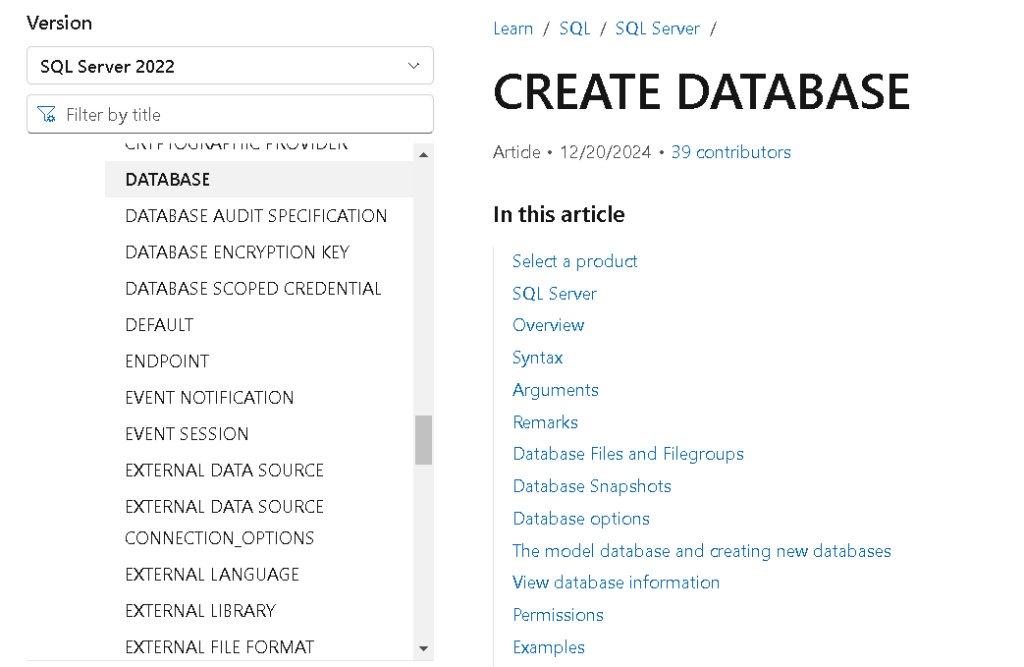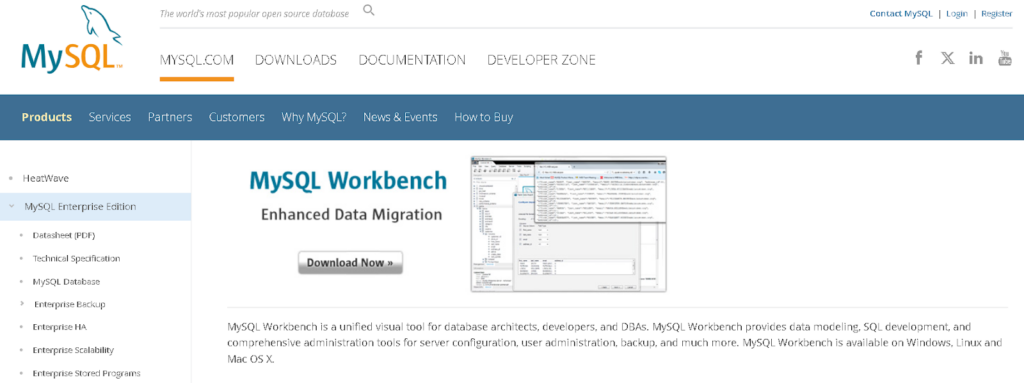Database Performance: Optimizing Modern Systems for Maximum Efficiency
By Alex Carter on October 2, 2024
Databases are fascinating in that they are all but invisible – however, they are the backbone that powers every modern online system. Everything we know and interact with, from social media platforms to banking apps and online shops, functions strictly on this basis, so learning how databases work and how to tune them is essential for guaranteed productivity.
What happens if your database is poorly optimized? The immediate problems will include operational lags, frustrating response time, and many other issues impacting your performance. In turn, it can lead to a loss in revenue and dissatisfaction on the part of your customers.
Find out how to evaluate your database performance, what key metrics to use in this process, and which tools can help you.
Databases as the Backbone of Modern Systems

Databases manage all types of data and processes that take place within your online system. Some key examples include:
- Transaction records. All the transactions your users make when visiting your website or using your app are stored in a database; with its help, you can see who paid for what and when it happened;
- Data storage & retrieval. All the info you have about your clients, products, and services is stored in your database;
- Instant data access. The quick search function is possible only because a database provides you with access to all the volumes of info it stores;
- Data security. Databases obey strict rules, which helps ensure consistency, and it is easy to protect the information they store from inside threats;
- Scalability support. Databases are flexible, so they can be expanded to serve an even bigger number of customers.
Without a database, all this data would be floating around chaotically, with no systemization and storage logic.
Key Areas Affected by Database Performance
The volume of information stored globally has reached staggering numbers. By 2028, it is projected to reach more than 394 zettabytes worldwide, and without databases, the entire system would have collapsed by now.
Let’s consider the areas that depend most on the flawless functioning of databases.
Customer Relation Management Systems
Efficient databases store all the client-related info. This improves customer experience as service agents can find relevant, personalized answers in no time at all. Checking client profiles and their history of purchases, creating and tracking support tickets — it’s all possible due to optimized CRM systems.
Enterprise Resource Planning
Imagine having an enterprise with multiple departments. How to ensure harmonious cooperation between them all?
You’ll need to track the joint projects, communication, and stock levels. Most importantly, you’ll have to guarantee data synchronization, and it can only happen with the help of a powerful, reliable database and replica servers.
eCommerce Platforms
Such platforms depend on extensive product catalogs, and the more client accounts they store, the better it is for business profit. Efficient, automated databases help process all the orders quickly, which enhances clients’ satisfaction and results in positive feedback.
Financial Systems
The productive functioning of a database helps process financial data with rapid speed. When all the reports are stored efficiently, banks and other organizations can locate them quickly and use them to make fact-based choices about their clients. This involves decisions about giving a loan, blocking an account, etc.
Key Metrics to Evaluate Database Performance
As you see, optimizing database performance is essential for any business or website to survive. Without it, it’s impossible to interact with your customers, store relevant information, and find quick answers to incoming queries.
How to do it, though? What does it take to make sure that your database functions well? First of all, pay attention to the following performance metrics.
- Query response time. Check how quickly your database responds to a query; the faster it happens, the more satisfied your clients are going to feel;
- Concurrency. A high level of concurrency means that a database is capable of handling multiple requests at once without losing an ounce of its speed and efficiency;
- Throughput. This concept determines how many transactions can be processed per second; it’s particularly important for large databases with a huge number of customers;
- Latency. It helps assess the delay between a query and a response to it — low latency is particularly relevant for systems that require real-time data analysis;
- Cache hit ratio. This ratio demonstrates how many requests are served directly from the cache; a higher ratio guarantees better performance of your database, as the response will be much faster;
- Error rates. Track the number of errors and glitches that happen with your database — this will show you how reliable it is. Without this certainty, the rate of bugs, hardware failures, and issues with configuration might skyrocket;
- Memory usage. Use this metric to check how much memory your database requires. If the rate is too high, you might be having a memory leak, or your resources might be allocated improperly;
- Replication lag. All your data must be replicated in secondary nodes for extra safety, so your replication lag must be low as it will guarantee consistency between the versions.
As long as these metrics show top results, your database is doing fine. However, if you detect any issues, you’ll need to solve them ASAP.
Addressing the Identified Bottlenecks
If the metrics above aren’t as good as you have hoped, then you’re dealing with bottlenecks, and they might negatively affect the performance of your database. What causes them, and how to correct them? Let’s figure it out.
Query response time
The issues with query response time might be the result of the lack of proper indexes. Your database might be forced to do large-scale data scans, not knowing where to look for answers, which will slow the entire system down.
Then, the structure of the query itself might be problematic. Your database might simply not recognize it, so it won’t know how to address a question and where to look for relevant answers.
To solve these problems, you’ll need to create a comprehensive system of indexes. Break down your queries into more manageable parts, and introduce helpful tags that will guide your users as they search for information. Finally, archive large files — this will reduce the size of your dataset, which might also chip away at the speed of your database’s responses.
Concurrency
The problems with concurrency take place when too many people are trying to access the same website simultaneously. Your database might be unable to manage all the points of connectivity properly, or it might automatically lock the info to make sure different people cannot edit it at the same time.
This issue can get complicated, but the solutions exist. Here’s what you can do.
- Implement connection pooling. This method means that you’re reusing the connections established previously instead of constantly generating new ones;
- Use optimistic locking. By using this approach, you’ll get your database to lock the data once it is changed instead of becoming inaccessible to everyone at once;
- Apply read replicas. Make the copies of your database suitable for reading only, not for adding new info — this mode will ensure a quicker and more optimized user experience.
These solutions are simple. Implement them and use the best website optimization tools to enhance your productivity rates even further. Success depends on how thoroughly you approach your business, and this includes fine-tuning your databases and making your platform as user-friendly as it can possibly be.
Throughput
Your database performance might be lagging if it has to deal with many different tasks at the same time. In addition, your hardware might not be efficient enough, and the high number of long-running queries might be slowing things down further.
How to fix these problems? First, put tasks of a similar nature into a batch-processing category. Your database will know to handle them together simultaneously instead of paying attention to each one separately.
Second, start using cloud services more if you haven’t done it already. It’s one of the quickest ways to optimize your database performance. You can also do sharding, dividing your database into smaller parts to balance the load and spread it more evenly.
Latency
The delay that pops up between a request and a response to it is often the result of long distances between the servers. It can also be caused by too many users trying to access the same data from different locations, overwhelming the power capacity of your database.
The solution can entail using more SSD drives, as they tend to be much faster than hard drives. In addition, you can use connection pooling or decrease the volume of data that your customers seek out most often. Everything depends on the scale of your work and the capacities of your database.
Cache Hit Ratio
If your database cannot always find what it needs in its memory, and this situation is repeated time and time again, the problem might be in the size of your cache. In addition, it might not be storing the right data, or the requests from your customers might be too unique.
To solve this problem, cache the results of the most frequent queries — this will speed up the search process. You can also use various tools that will do this task for you. We’ll discuss what they are a bit later.
Error Rates
If your database shows the error message instead of responding to your commands as it should, the first thing to do is check it for any potential data corruption. Maybe it is taking the database too long to return to you with an answer — in this case, check the timeout settings and adjust them.
If you have an app, design it in a way that lets it process the requests in a bigger number of smaller steps. Don’t forget about the retry logic, and use it to identify and solve any other issues.
Memory Usage
If any memory issues occur, launch a detailed scan to determine the problematic areas, plus do a manual overview. You need to monitor your database frequently for that. Memory can be fixed in various ways, from increasing the size of your cache to fixing the settings or the content of queries.
Replication Lag
Sometimes, the copies of your database might fail to be updated alongside your main version. Perhaps the twin servers are not powerful or productive enough — you might need to use parallel or asynchronous replication to solve this issue. Upgrading the replica servers is also a good idea.
Tools for Fine-Tuning Database Performance
Now, what tools can help you enhance your database performance and solve some of the issues we identified above? Here are the options for the most popular databases that are worth considering.
MSQL Workbench

This tool is ideal for the MySQL type of database. It can:
- Optimize your queries and their speed;
- Produce accurate performance reports;
- Support schema validation;
- Offer indexing analysis.
MySQL is one of the most popular databases out there, so if you use it and need help optimizing its performance, MSQL Workbench could be a great choice.
Oracle SQL Developer

If you’re using Oracle, then SQL Developer could be a tool of choice for you. It executes query debugging, diagnosing slow or problematic queries. If you want to improve SQL query performance in other ways, then the tool will suggest further optimal execution plans; most importantly, it provides fact-based tuning recommendations that will make your job much easier.
pgAdmin

This tool serves PostgreSQL databases and performs the following functions:
- Performance profiling;
- Debugging;
- Identification of bottlenecks and suggestions for their removal;
- Index usage monitoring.
pgAdmin is an effective helper for all those operating the PostgreSQL database.
Monitor the Performance of Your Database
Whatever tools you use, you have to monitor your database performance regularly. The success of your business depends on it, as proper functioning is crucial for the satisfaction of your customers and the overall productivity of your website or app.
You can be working with SQL databases, Oracle systems, or anything else, and there will be just the right tools that will allow you to perform regular monitoring. Find the ones that work for you, start using them, and get the maximum out of your database.
Posted in blog, Web Applications
Alex Carter
Alex Carter is a cybersecurity enthusiast and tech writer with a passion for online privacy, website performance, and digital security. With years of experience in web monitoring and threat prevention, Alex simplifies complex topics to help businesses and developers safeguard their online presence. When not exploring the latest in cybersecurity, Alex enjoys testing new tech tools and sharing insights on best practices for a secure web.
